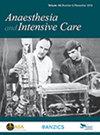Complete heart block of multifactorial aetiology following sugammadex administration.
IF 1.1
4区 医学
Q3 ANESTHESIOLOGY
引用次数: 0
Abstract
Sugammadex-induced bradycardia is well known and the incidence is quoted to be around 0.6–1%. 1,2 While the mechanism is unknown, sugammadex-induced bradycardia can be resistant to the administration of anti-cholinergics 3 and may degenerate to pulseless electrical activity 4 or asystole, 5 warranting management with vasopressors and inotropes alongside standard cardio-pulmonary resuscitation (CPR) measures. We report a patient who developed asystole immediately after administration of 200 mg (2.7 mg/kg) of sugammadex, which then evolved into complete heart block (CHB) requiring temporary transvenous pacing over 24 h. An 84-year-old male weighing 73 kg with features of acute acalculous cholecystitis was scheduled for an emergency laparoscopic cholecystectomy. Significant past medical history included hypertension, hypercho-lesterolaemia, ischaemic heart disease with moderate systolic dysfunction (ejection fraction 37%), stable angina and chronic kidney disease with an estimated glomerular filtration rate of 45 ml/min/1.72 m 2 . He was independent with his activities of daily living; however, he described New York Heart Association Class 2 dyspnoea. His medications included isosorbide mononitrate, candesartan, aspirin, atorvastatin and pantoprazole. His baseline troponin level during this admission was elevated to 66 ng/l, a change from 43 ng/l (reference range (cid:1) 16 ng/l) measured three weeks prior, and this was attributed to his gallbladder inflammation and renal dysfunction. A preoperative electrocardiogram (ECG) showed sinus rhythm with a heart rate (HR) of 66/min and left bundle branch block.糖美酮给药后多因素病因的完全性心脏传导阻滞。
本文章由计算机程序翻译,如有差异,请以英文原文为准。
求助全文
约1分钟内获得全文
求助全文
来源期刊
CiteScore
2.70
自引率
13.30%
发文量
150
审稿时长
3 months
期刊介绍:
Anaesthesia and Intensive Care is an international journal publishing timely, peer reviewed articles that have educational value and scientific merit for clinicians and researchers associated with anaesthesia, intensive care medicine, and pain medicine.

 求助内容:
求助内容: 应助结果提醒方式:
应助结果提醒方式:


